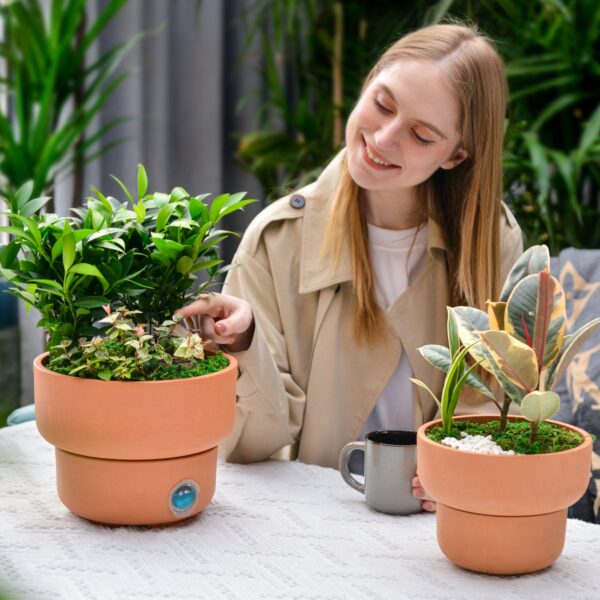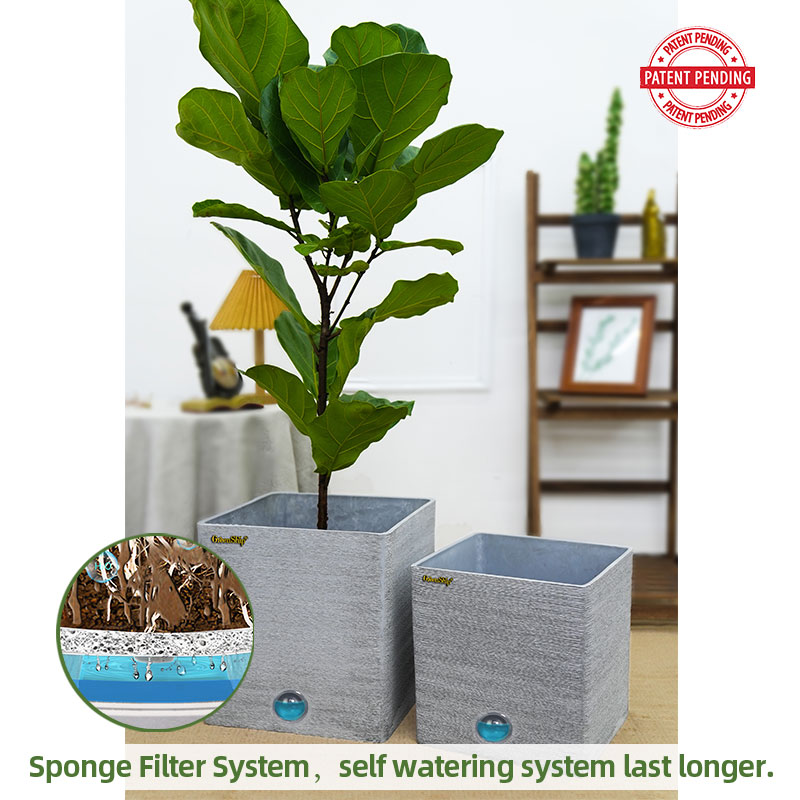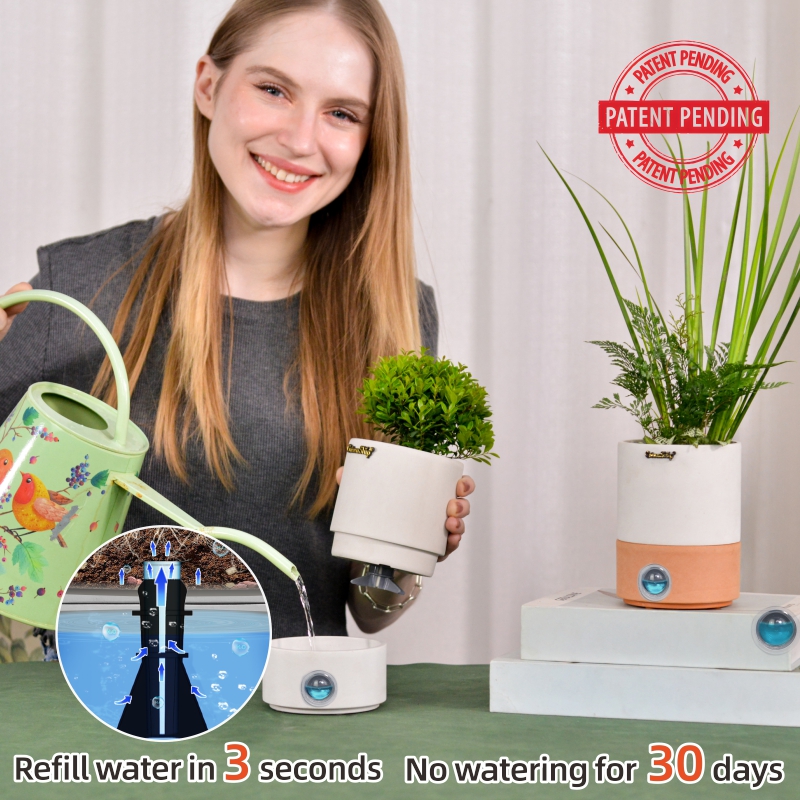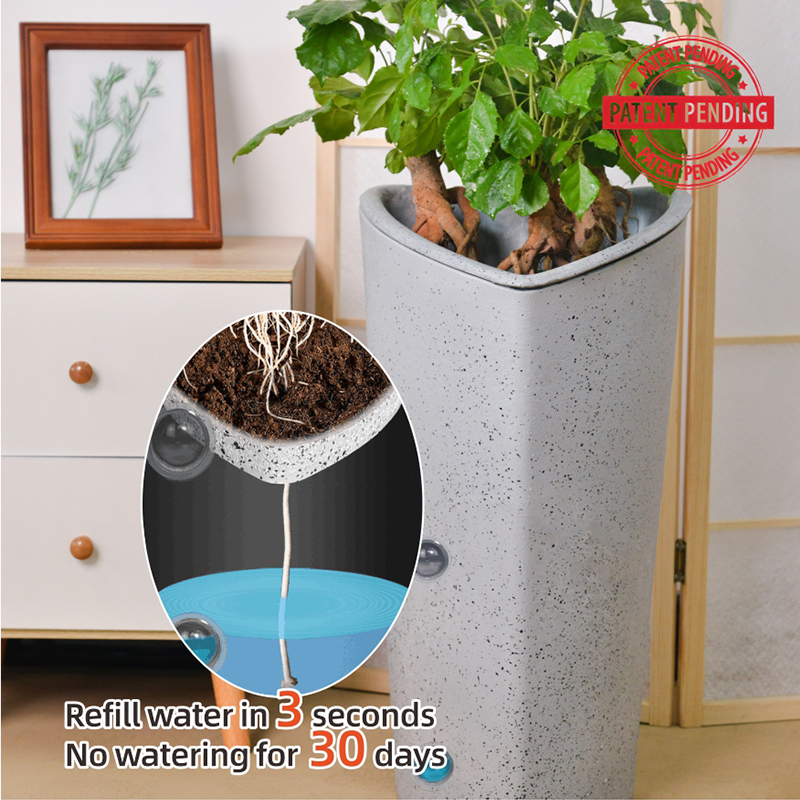Can Self-Watering Pots Cause Root Rot?
Self-watering pots are a great way to maintain a consistent watering schedule for your plants, but like any gardening tool, they require proper use to ensure your plants thrive. One potential issue that can arise from using self-watering pots is root rot, a common problem caused by overwatering or poor drainage. While self-watering pots themselves are not inherently harmful, improper use or unsuitable plants can create conditions that lead to root rot.
Why Do Self-Watering Pots Cause Root Rot?
- Overwatering:
- How It Happens: Self-watering pots are designed to keep a constant supply of moisture available to the plant. If the water reservoir is constantly full or refilled too often, the soil can become overly saturated. In this situation, the roots can become submerged in water, depriving them of oxygen and causing them to suffocate.
- Result: When roots don’t have access to enough oxygen, the soil can become a breeding ground for harmful fungi and bacteria. These pathogens thrive in the moist, low-oxygen environment and can cause the plant’s roots to rot.
- Lack of Drainage:
- How It Happens: If the inner pot of a self-watering system doesn’t have proper drainage holes, excess water can accumulate in the soil without draining away. This trapped water can lead to the same issues as overwatering.
- Result: Without proper drainage, the excess water can’t escape, leading to waterlogged soil, poor air circulation, and a higher risk of root rot.

How to Minimize the Risk of Root Rot:
- Choose the Right Plants:
- What to Do: Select plants that are suited to consistently moist conditions. Some plants, like tropical plants or moisture-loving species, are more tolerant of wet soil and will do well in self-watering pots. However, succulents and cacti, which prefer drier conditions, should be avoided in self-watering pots.
- Why It Helps: Plants that are adapted to higher moisture levels can handle the consistent watering provided by self-watering pots without succumbing to root rot.
- Use Well-Draining Soil:
- What to Do: Choose a potting mix that promotes good drainage. Adding perlite, sand, or other soil amendments can help prevent the soil from becoming too compacted and retain excess moisture.
- Why It Helps: Well-draining soil allows water to pass through easily, preventing the roots from sitting in stagnant water and ensuring better oxygen flow to the root system.
- Monitor Water Levels Carefully:
- What to Do: Regularly check the water level in the reservoir and refill it only when needed. Some self-watering pots come with a visible water level indicator, which makes it easier to monitor how much water is in the reservoir.
- Why It Helps: Keeping track of the water level ensures that the plant’s roots aren’t constantly saturated. Refill the reservoir only when the water level is low to avoid overwatering.
- Avoid Overwatering:
- What to Do: Even with a self-watering pot, it’s important to allow the soil to dry slightly between waterings. Avoid constantly keeping the soil moist.
- Why It Helps: Allowing the soil to dry out a bit between waterings can help prevent waterlogged soil and reduce the risk of root rot. This also mimics the natural drying process that most plants experience in their native environments.
- Check for Signs of Root Rot:
- What to Do: Regularly inspect your plants for signs of root rot, such as yellowing leaves, wilting, or a foul odor from the soil.
- Why It Helps: Catching root rot early allows you to take corrective action, such as removing affected roots, adjusting the watering schedule, or repotting the plant in fresh, well-draining soil.

Conclusion:
While self-watering pots are a convenient tool for maintaining moisture levels in your plants, they can contribute to root rot if not used correctly. Overwatering and inadequate drainage are the primary causes of root rot in self-watering systems. By choosing the right plants, using well-draining soil, monitoring water levels, and ensuring proper drainage, you can reduce the risk of root rot and enjoy the benefits of a healthy, thriving plant collection.

Remember, the key to successful use of self-watering pots is balance. With the right care and attention, you can keep your plants hydrated without the risk of overwatering or root rot.
GK-15UF
By greenship|2024-03-26T01:20:17+00:00March 25, 2024|Categories: Healthy Root Self-Watering System|
16G12
By greenship|2024-03-26T01:16:38+00:00March 25, 2024|Categories: HomeOasis Self-Watering System|
11AB
By greenship|2024-03-26T01:17:01+00:00March 25, 2024|Categories: HomeOasis Self-Watering System|



